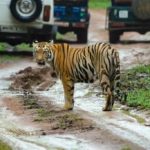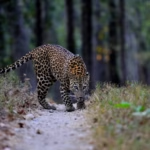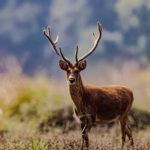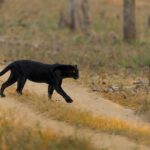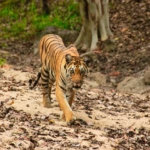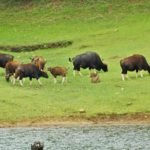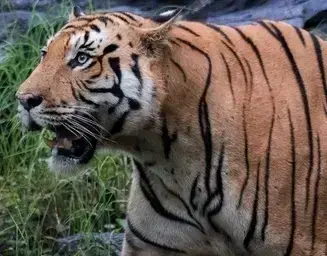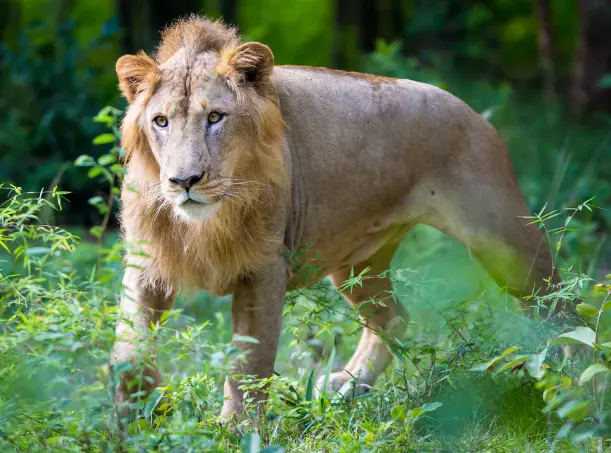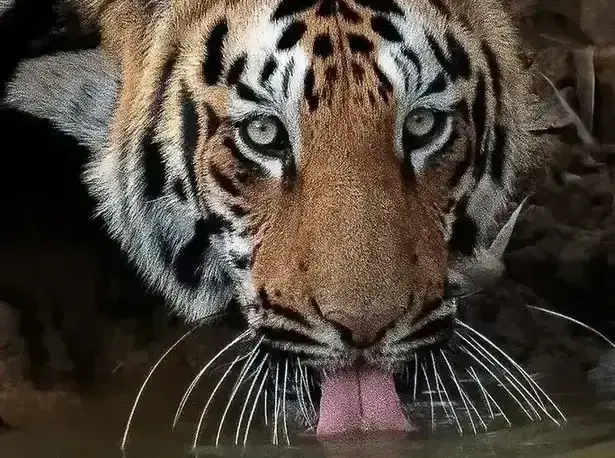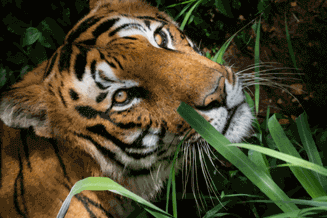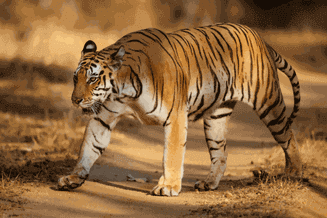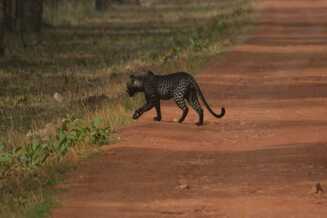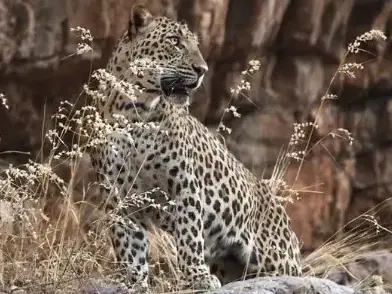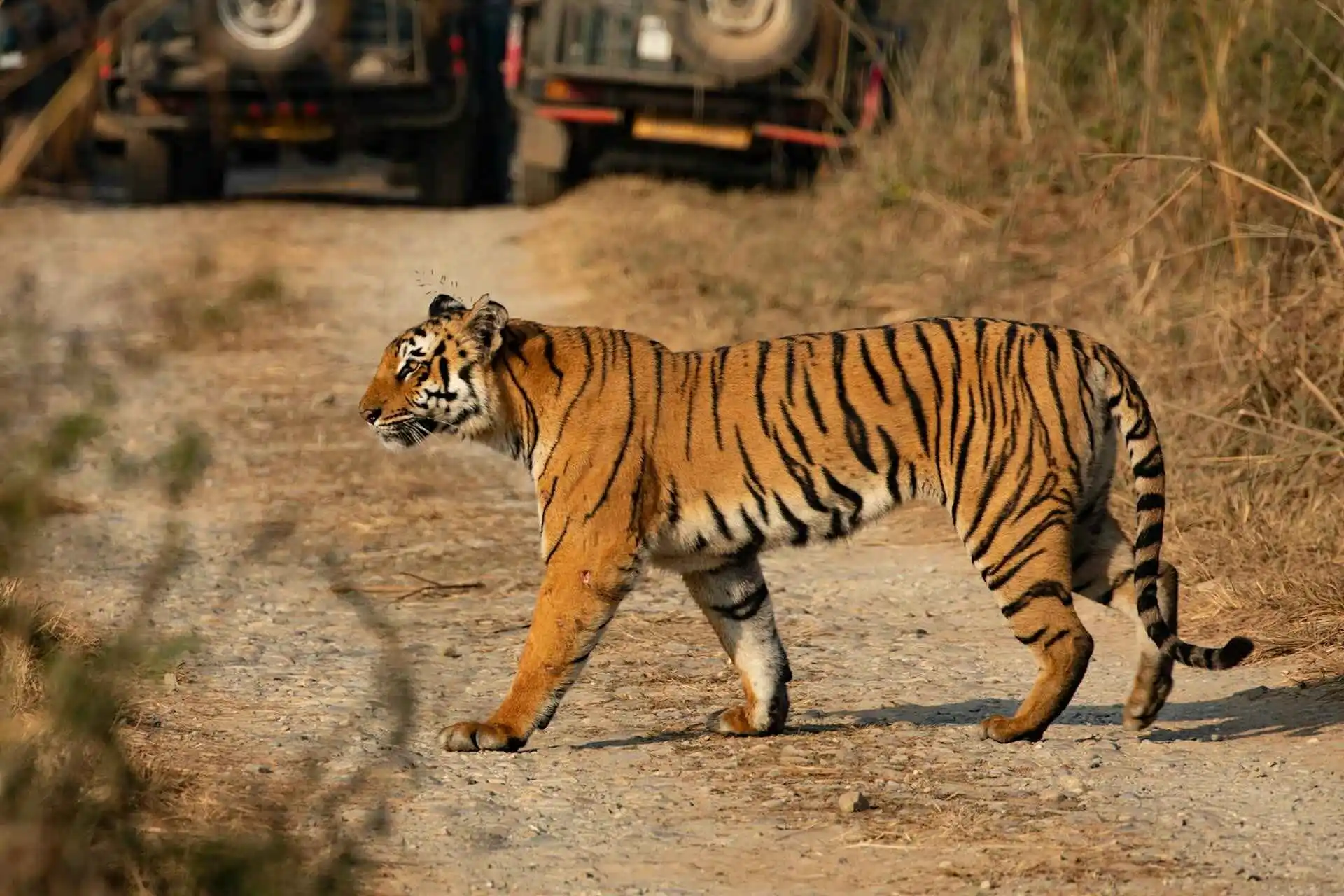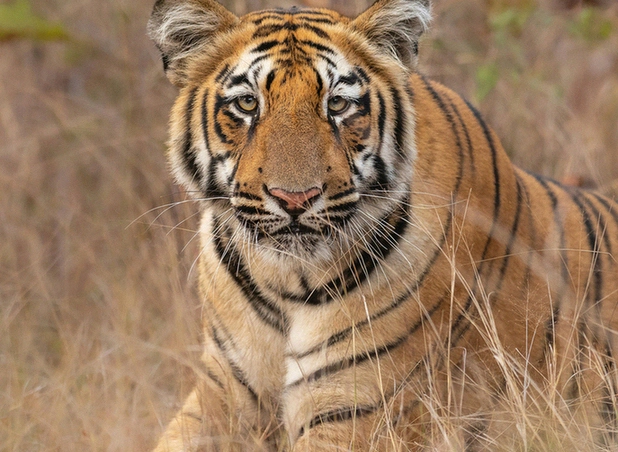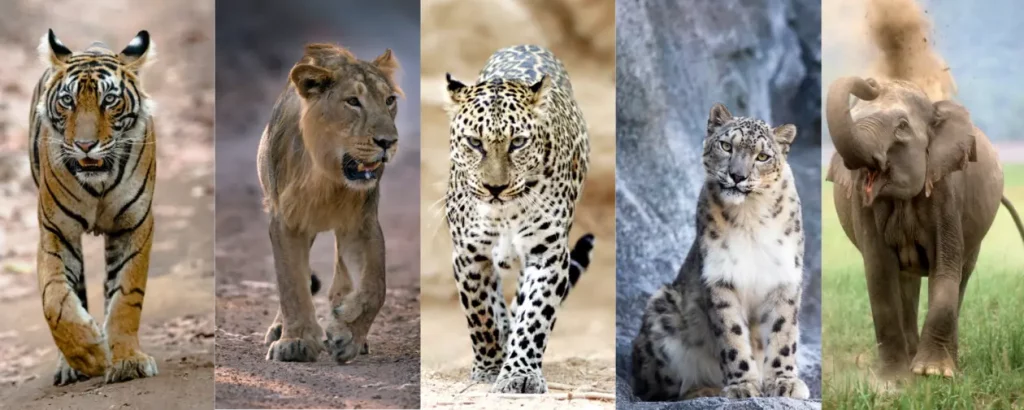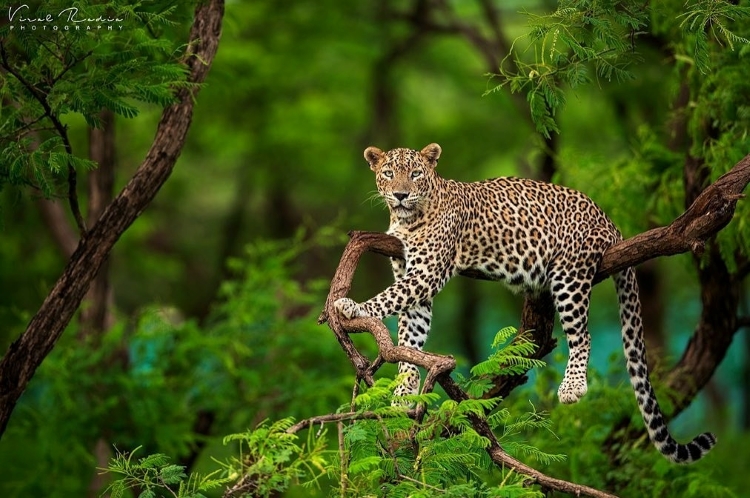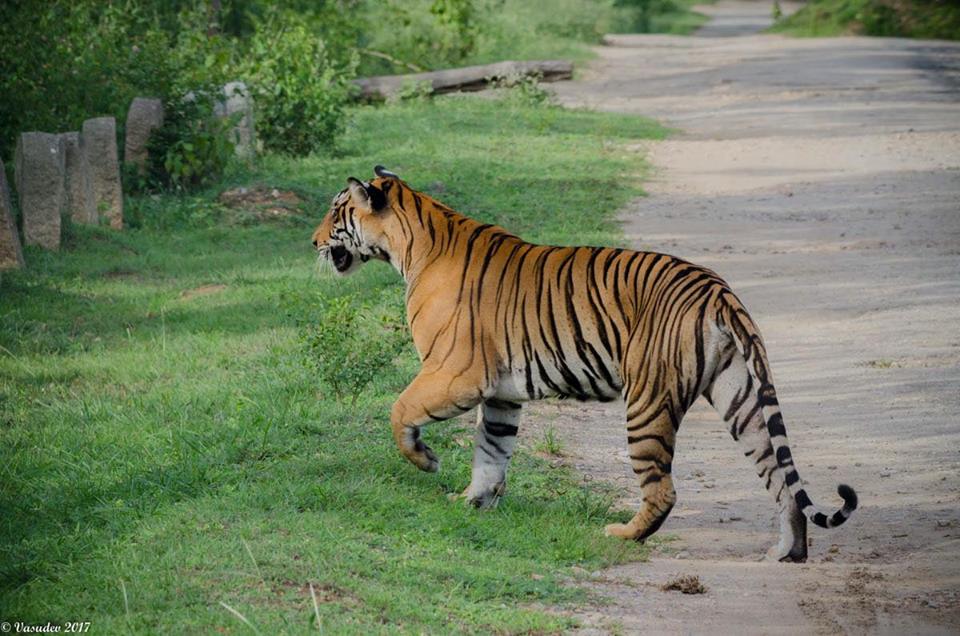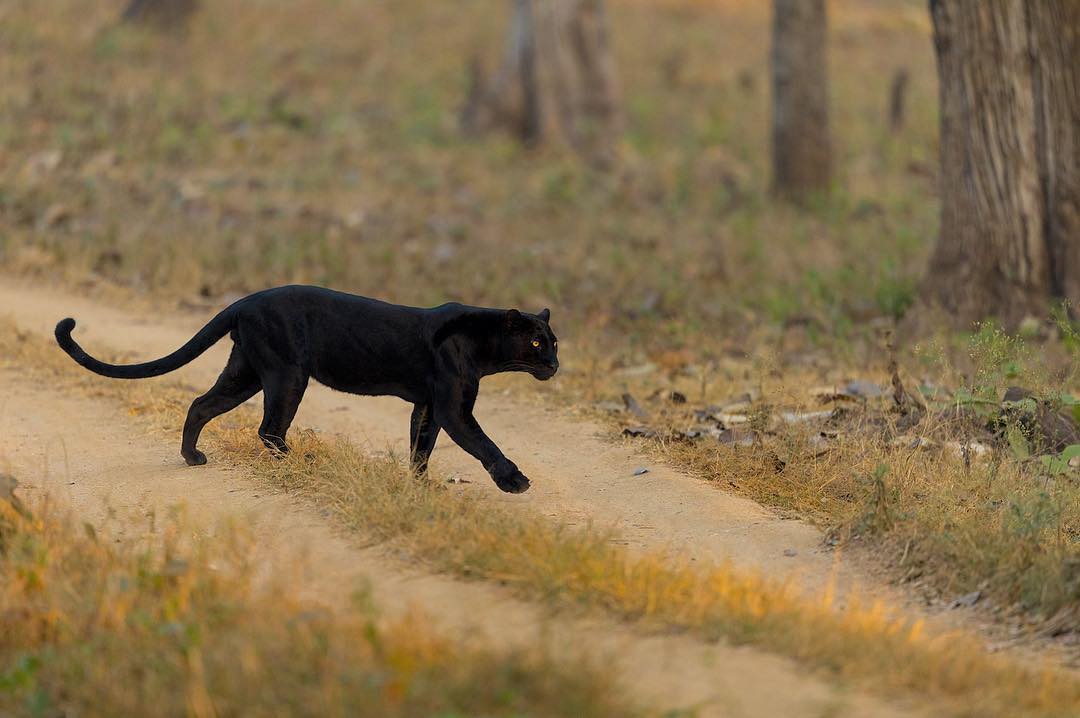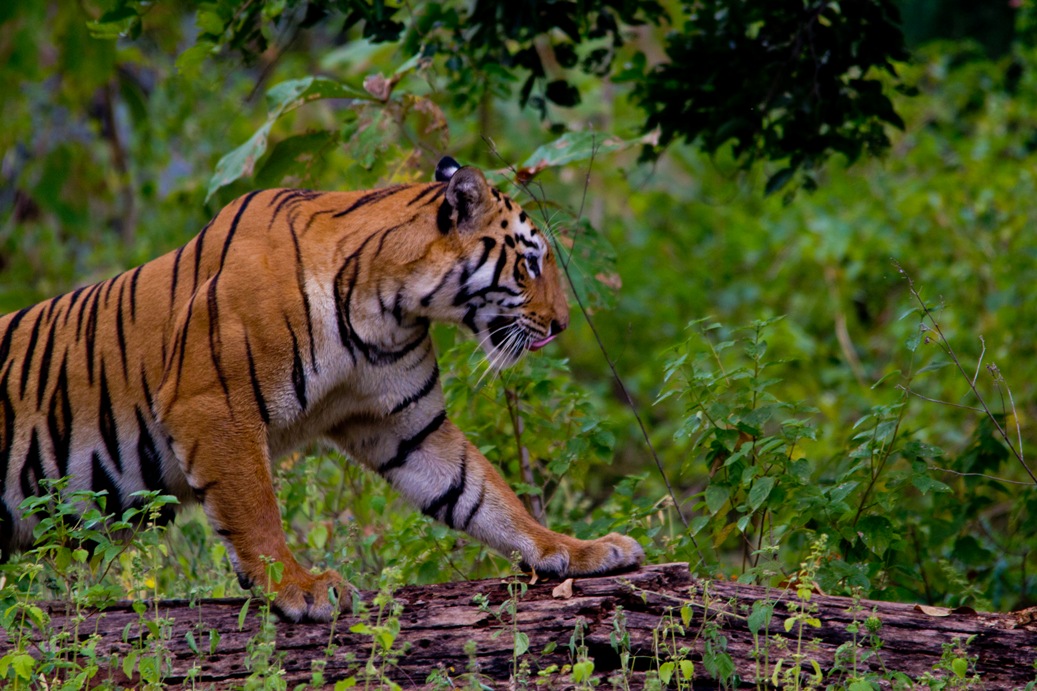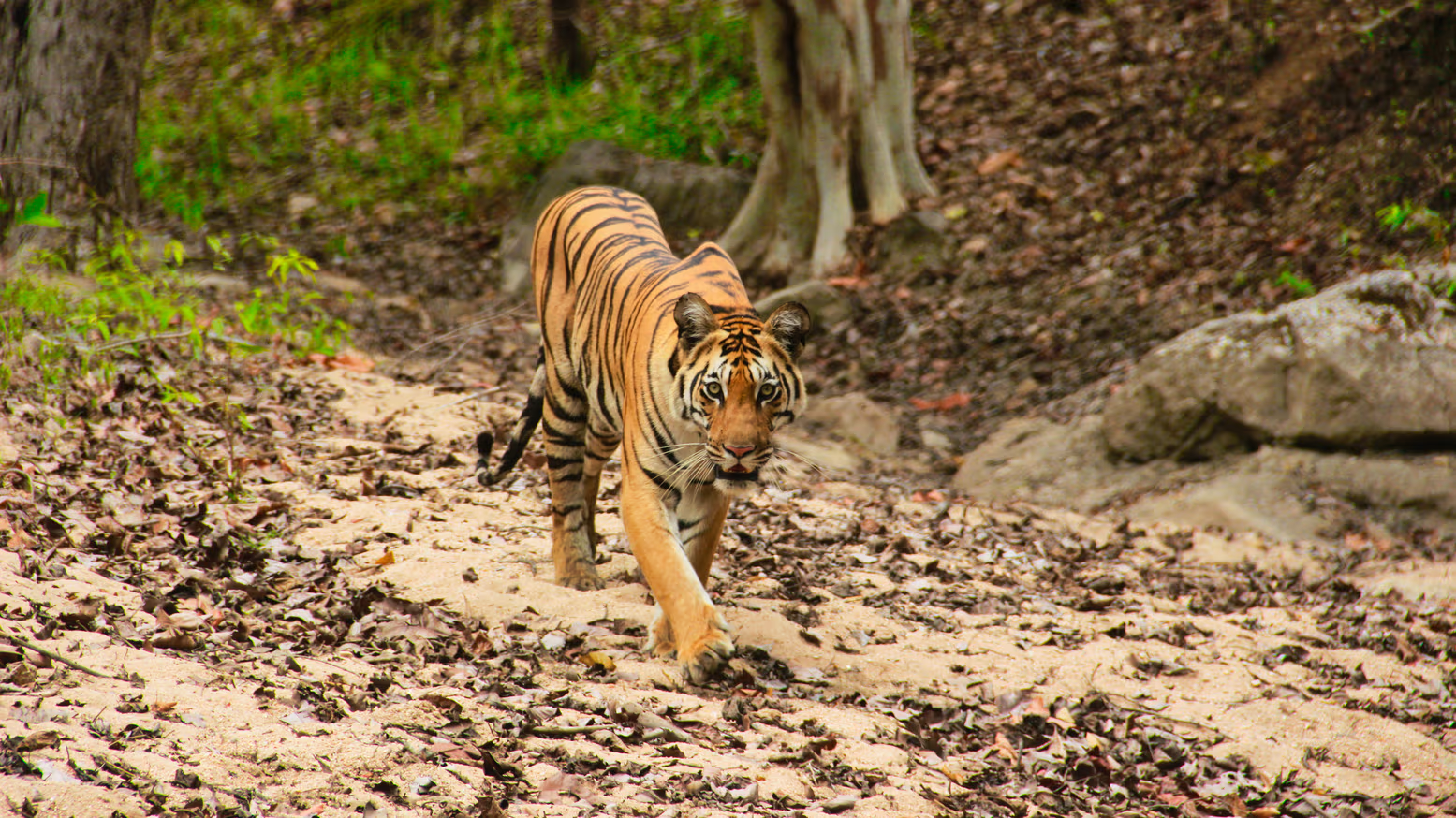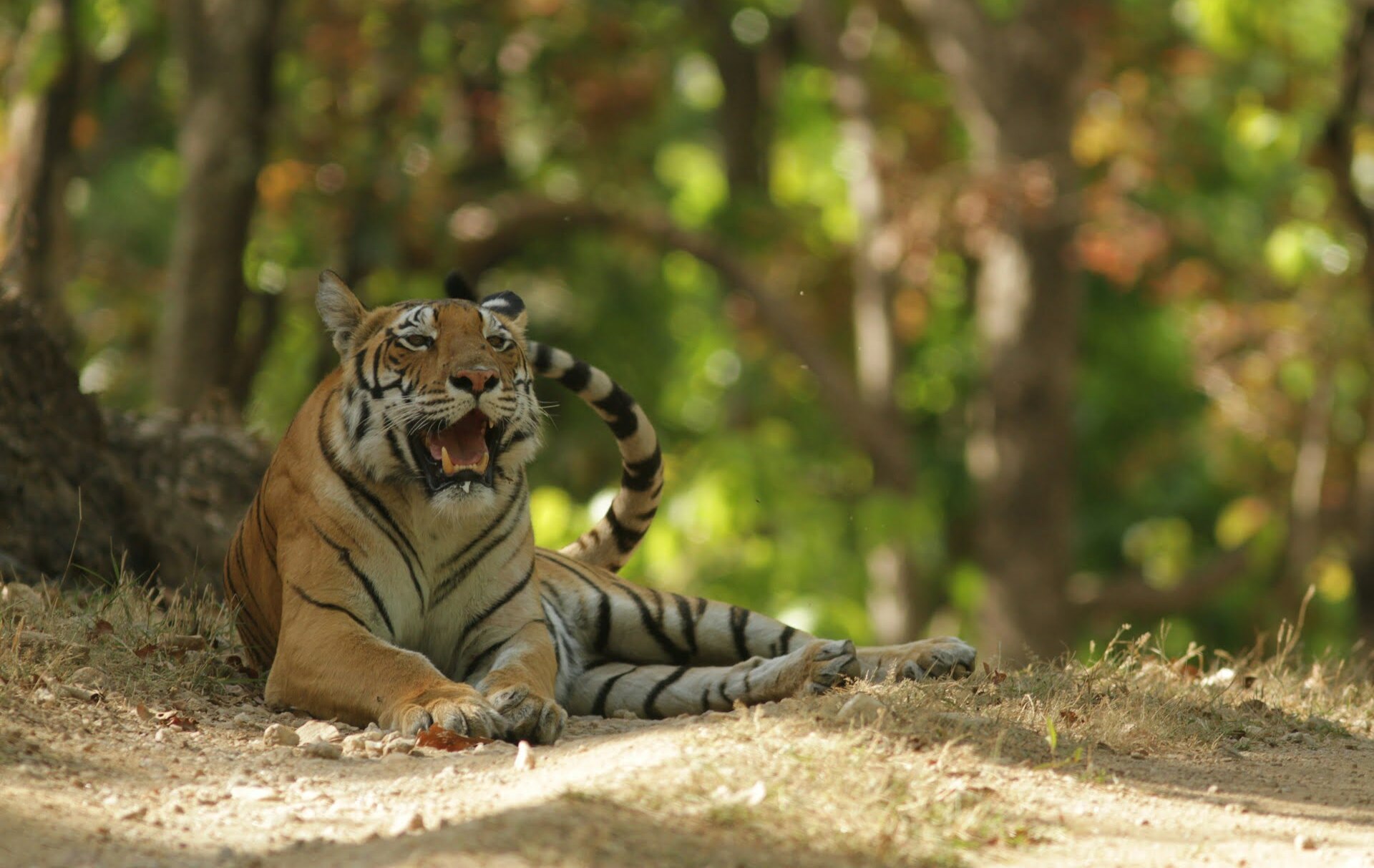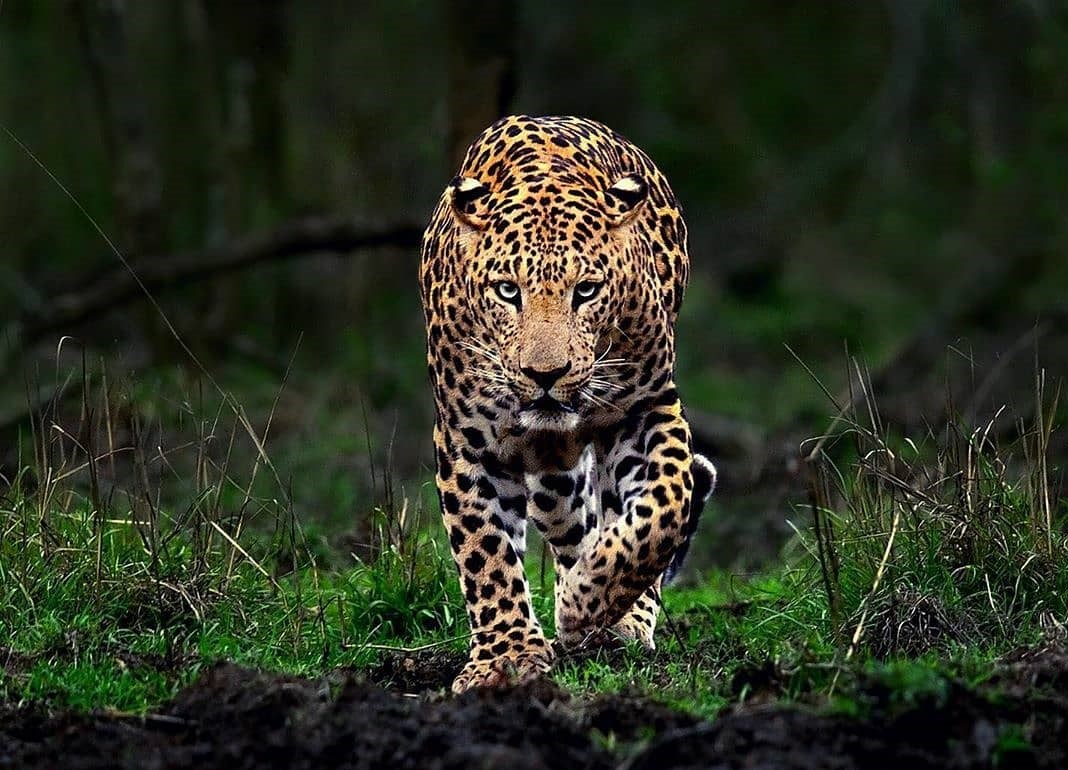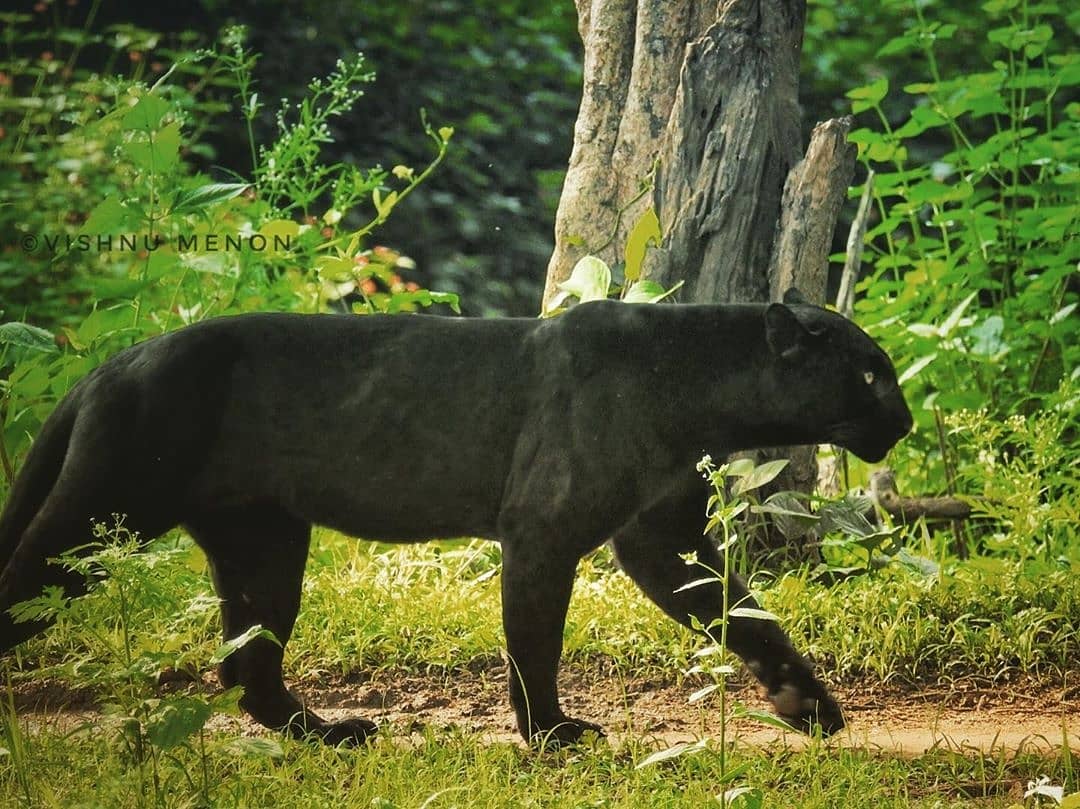Lion Census Result – Gujarat’s Big Cat Celebration
The 16th Asiatic Lion Census results are finally here, and they’re making conservationists across India incredibly happy! Gujarat’s lion population has jumped to 891 lions, showing a remarkable 32.2% increase from the 2020 count of 674. This means India’s only wild lion population is not just surviving – it’s absolutely thriving.
The census covered a massive area of 35,000 square kilometers across 11 districts including Junagadh, Amreli, Bhavnagar, Rajkot, Porbandar, and Gir Somnath. What’s really exciting is that these magnificent cats aren’t just sticking to their traditional Gir forest home anymore – they’re expanding their territory like never before.
Population Distribution – Breaking Down the Numbers
Here’s how our 891 lions break down by category:
- Adult Males: 196 strong, territorial lions
- Adult Females: 330 lionesses (the real rulers of the pride!)
- Sub-adults and Cubs: 365 young lions representing the future
The gender distribution shows a healthy breeding population, with nearly two females for every male – which is actually perfect for lion social dynamics. Those 365 cubs and sub-adults prove that Gujarat’s conservation efforts are creating safe spaces where lions can raise their families successfully.
Interestingly, 384 lions live in forested areas while 507 have adapted to non-forested zones, showing how adaptable these big cats have become to different landscapes across Gujarat.
Largest Lion Pride
The census discovered something truly spectacular – a massive pride of 17 lions roaming together in Bhavnagar district! This represents one of the largest wild lion prides ever recorded in modern India. Large prides like this typically form when there’s abundant prey and minimal human-wildlife conflict, which speaks volumes about the conservation success in this region.
This super-pride likely consists of related females, their cubs, and a coalition of males working together to protect their extensive territory. Finding such a large group suggests that lions are finding enough space and resources to support these bigger family units.
Also Read: Tiger Census 2022
Infographics – Lion Census 2025
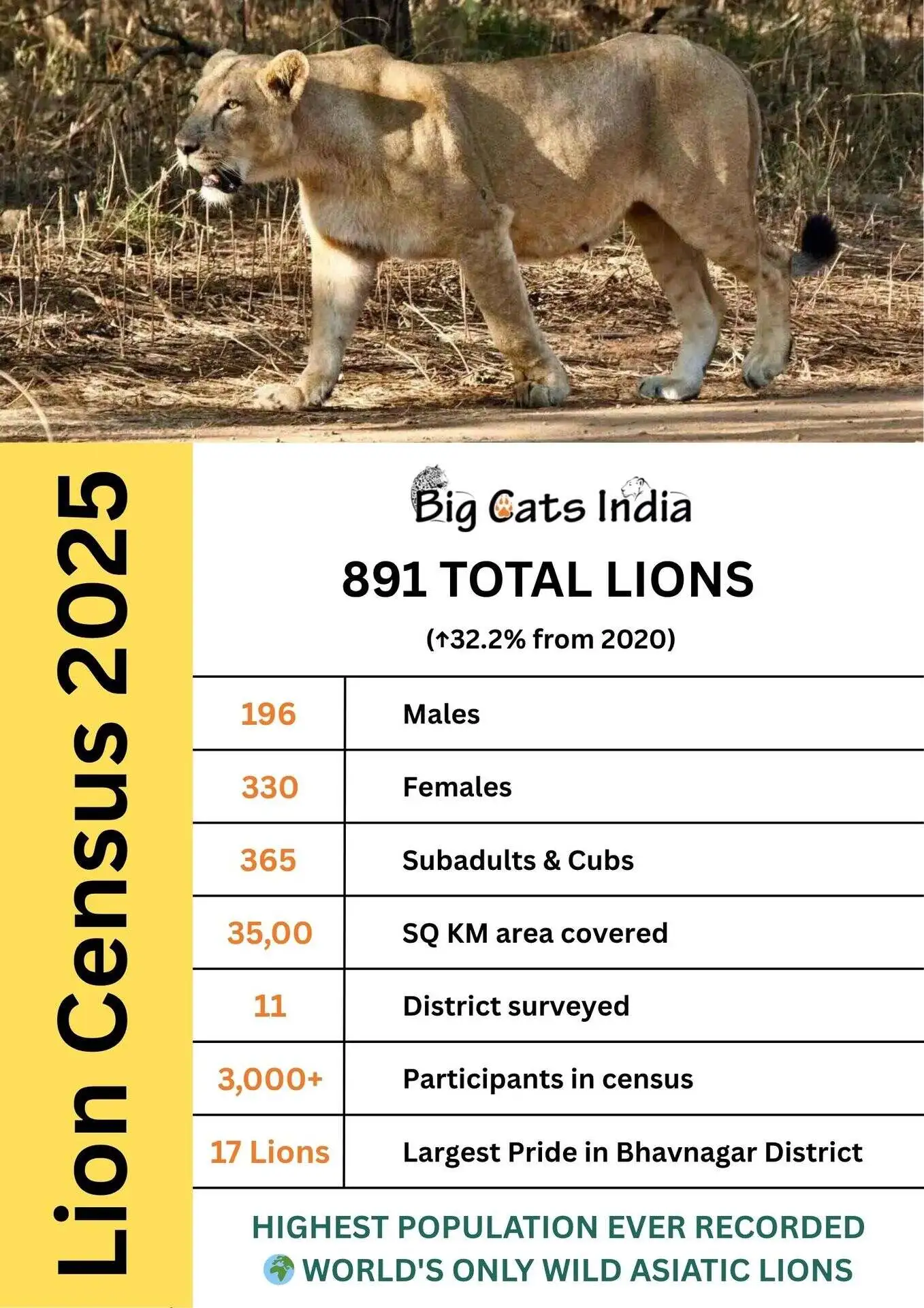
Rise of the Lions from Extension
The story of Gujarat’s lions reads like a conservation fairy tale. These cats have literally come back from the brink of extinction to become one of India’s biggest wildlife success stories. The Asiatic lion population was down to just double digits in the early 1900s, making their current numbers almost miraculous.
What’s driving this incredible comeback? Several factors are working together:
- Protected habitat expansion beyond traditional Gir boundaries
- Community involvement in conservation efforts
- Reduced poaching through better patrolling and awareness
- Improved veterinary care for injured or sick lions
- Corridor creation allowing lions to move between different forest patches
The lions aren’t just surviving in Gir anymore – they’re establishing territories in agricultural landscapes, coastal areas, and even near urban settlements. This expansion shows their remarkable adaptability and the growing tolerance of local communities.
Comparison of 2020 and 2025 Lion Census
The numbers tell an incredible story of conservation success:
| Metric | 2020 Census | 2025 Census | Change / Growth % |
|---|---|---|---|
| Total Lion Population | 674 | 891 | +32.2% increase |
| Adult Males | 159 | 196 | +21.7% increase |
| Adult Females | 262 | 330 | +26.9% increase |
| Sub-adults & Cubs | 253 | 365 | +44.3% increase |
| Outside Protected Areas | ~30% | ~37% | +7% habitat expansion |
| Largest Pride (Size) | 13 Lions | 17 Lions | - |
| Largest Pride (Location) | Savarkundla (Amreli) | Mahuva (Bhavnagar) | Shifted to Bhavnagar, showing territory growth |
| New Territories Occupied | 4 Districts | 6+ Districts | Spread into Bhavnagar, Botad, Surendranagar |
This 32% jump in just five years represents one of the highest growth rates recorded for any big cat population globally. The growth isn’t just about more births – it also indicates:
- Lower mortality rates due to better protection
- Improved habitat quality supporting more lions per square kilometer
- Better prey availability sustaining larger populations
- Reduced human-lion conflict through community programs
The 2025 census also showed lions occupying new territories that weren’t part of their range in 2020, proving that conservation corridors and habitat restoration efforts are paying off handsomely.
Chronical Lion Population Chart
While we don’t have the complete historical data chart here, the trend over the past few decades shows a steady upward climb:
| Year | Adults | Sub-adults | Cubs | Total | |
|---|---|---|---|---|---|
| Male | Female | ||||
| 1990 | 99 | 95 | 27 | 63 | 284 |
| 1995 | 94 | 100 | 39 | 71 | 304 |
| 2001 | 101 | 114 | 57 | 55 | 327 |
| 2005 | 89 | 124 | 72 | 74 | 359 |
| 2010 | 97 | 162 | 75 | 77 | 411 |
| 2015 | 109 | 201 | 73 | 140 | 523 |
| 2020 | 159 | 262 | 115 | 138 | 674 |
| 2025 | 196 | 330 | 140 | 225 | 891 |
This upward trajectory represents decades of dedicated conservation work by forest departments, local communities, and wildlife organizations working together.
Methods Used to Count Lions in Wild
The 2025 census wasn’t just about sending people into the forest with binoculars. The methodology included Direct Beat Verification, dividing regions into zones and sub-zones, with over 3,000 participants, including forest officials and volunteers. This massive undertaking used cutting-edge technology to ensure accuracy.
High-tech tools deployed:
- Camera traps: High-tech tools such as camera traps, GPS collars, and GIS mapping were used for data collection and analysis
- GPS tracking collars: Real-time monitoring of individual lions
- GIS mapping software: Creating detailed territory maps
- Automated sensor grids: Including magnetic, movement, and infrared heat sensors to detect and track lions
- GPS-based vehicle tracking: Advanced tools such as Global Positioning System-based tracking are used to monitor lions and vehicles, ensuring efficient surveillance
The ‘direct beat verification’ method promises unprecedented accuracy in counting these majestic creatures, with state-of-the-art technology ensuring near-zero margins of error. Teams systematically covered every possible lion habitat, using both traditional tracking skills and modern technology to identify individual animals.
Why Lion Census is Important
The lion census does much more than count impressive numbers – it’s essential for keeping India’s only wild lion population healthy and thriving.
- Smart conservation decisions: You can’t protect what you don’t properly count. These numbers help forest departments decide where to spend money, expand protected areas, and focus their efforts.
- Preventing genetic problems: Since all of India’s wild lions live in Gujarat, scientists need to track their genetic health. The census helps spot potential inbreeding issues before they become serious problems.
- Reducing human-lion conflicts: Knowing where lions are moving helps authorities prepare local communities and prevent dangerous encounters before they happen.
- Supporting local economies: Healthy lion populations mean more tourists, which brings money to Gujarat’s communities and gives locals good reasons to support conservation.
- Global importance: Gujarat’s lions are the world’s last wild Asiatic lions. Their survival affects global biodiversity, making every count crucial for the planet’s wildlife heritage.
The 2025 results prove that smart conservation, community support, and modern technology can save species from extinction. Gujarat’s lions now show the world that humans and big cats can successfully live together.


